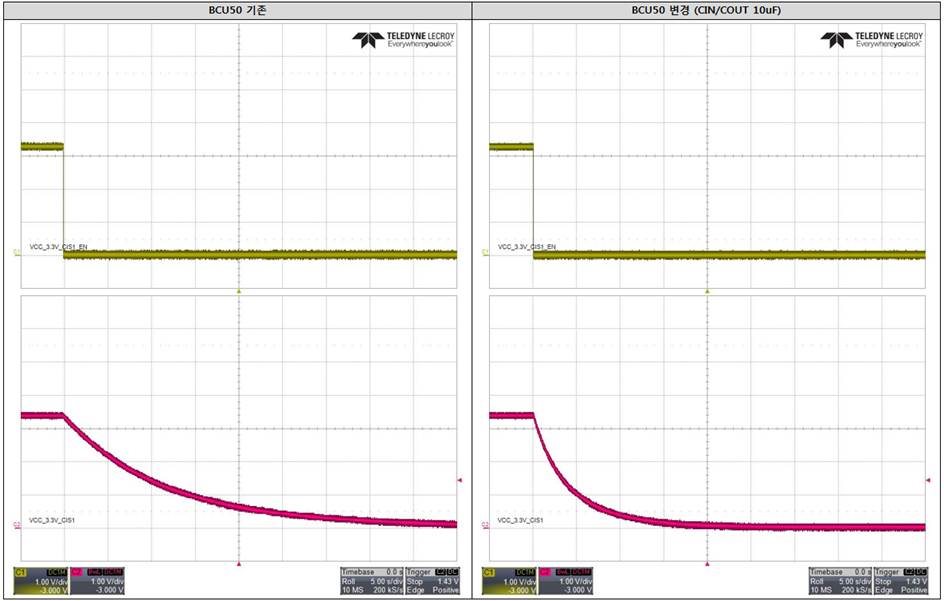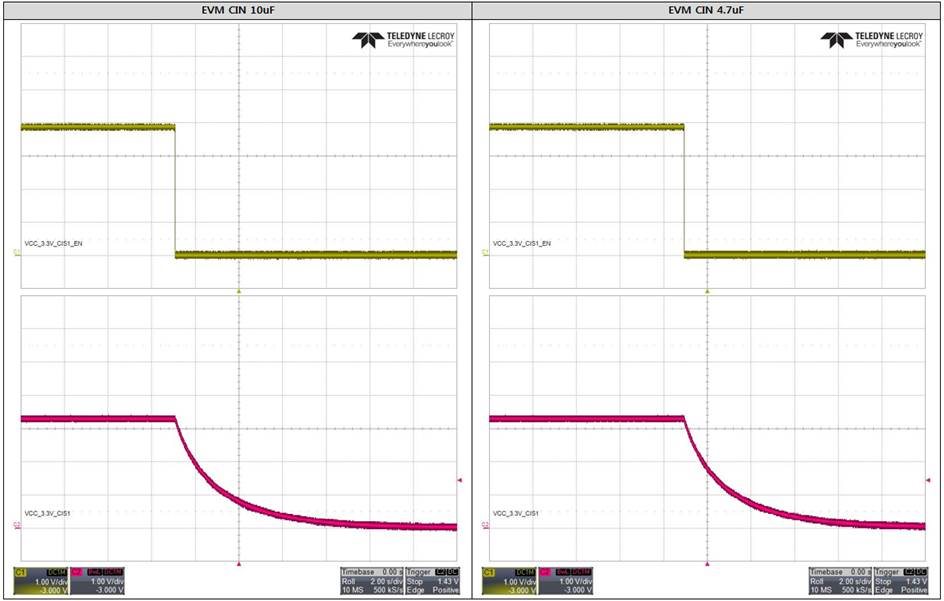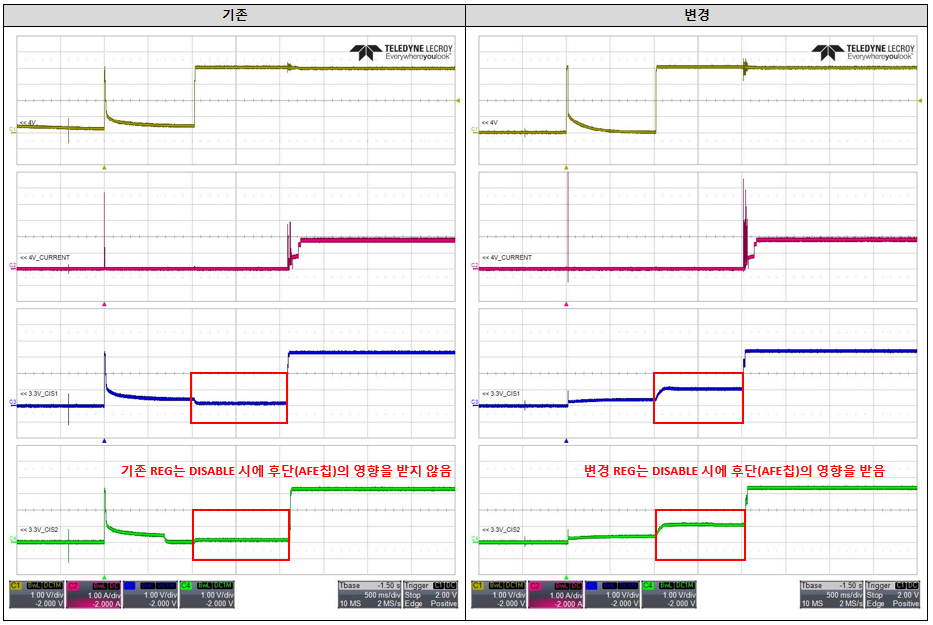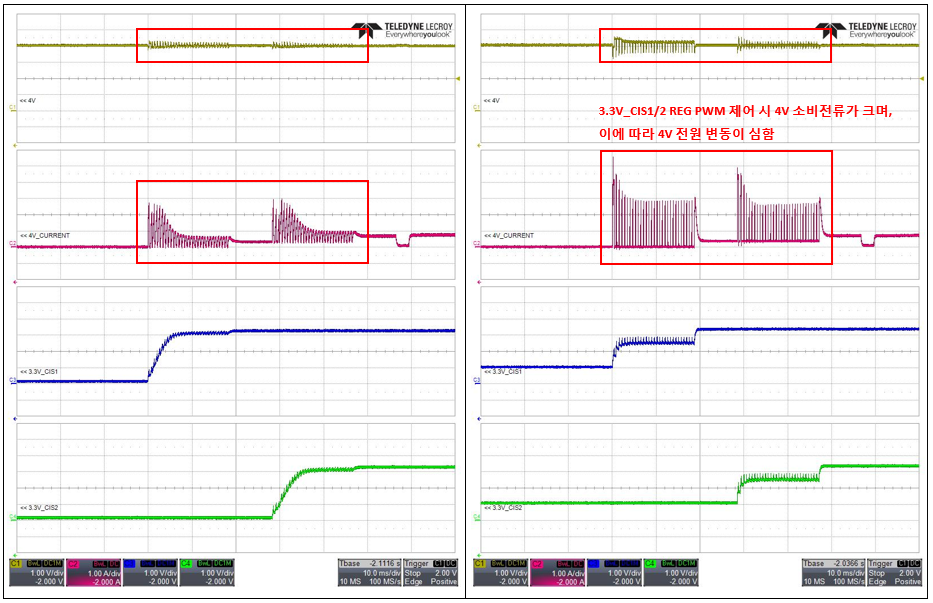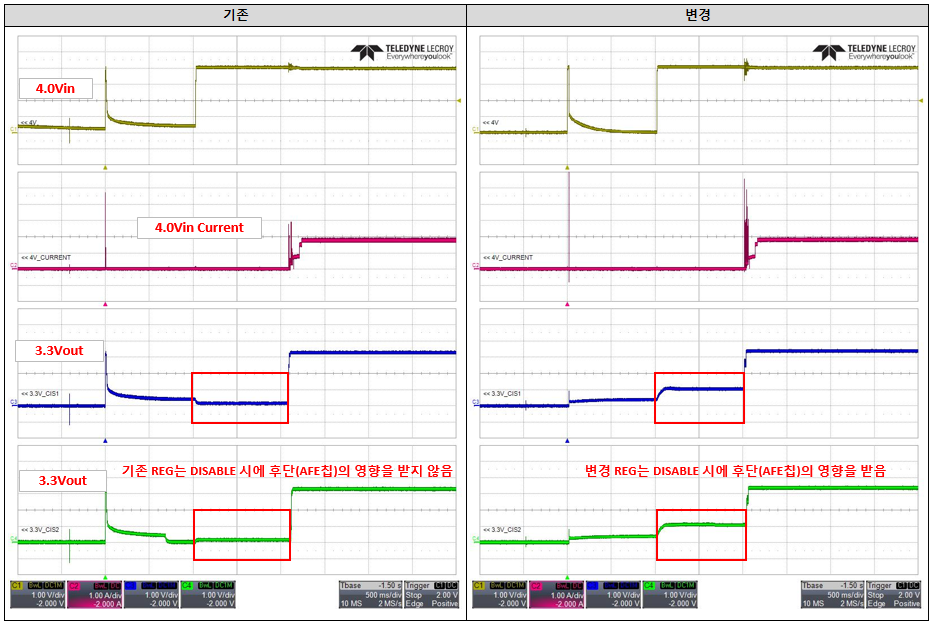Other Parts Discussed in Thread: TPS7A7002, TPS7A92
Hi,
Ask about TPS7A7001/002 polling time.
If power is removed from the EN pin through our board, it takes about 20 seconds for Vout to reach 0V.
It takes about 10 seconds to check through TI EVM.
When tested with EVM, the input and output capacitors used the default devices.
Below is the environment that is applied to our board.
If power is removed from the EN pin through our board, it takes about 20 seconds for Vout to reach 0V.
It takes about 10 seconds to check through TI EVM.
When tested with EVM, the input and output capacitors used the default devices.
Below is the environment that is applied to our board.
| Vin | Vout | Iout | device | remark |
| 5V | 4V | 2A | TPS7A7001 | 2pcs |
| 2V | 1.1V | 3A | TPS7A7002 | 2pcs |
| 3.3V | 2.5V | 2A | TPS7A7001 | |
| 2.5V | 1.35V | 2A | TPS7A7001 | |
| 4V | 3.3V | 3A | TPS7A7002 | 2pcs |
In addition, the following waveforms were taken from our board and TI EVM.
CH1 : EN / CH2 : Vout
1> our board (5sec Time/Div)
2> TI EVM (2sec Time/Div)
Please let me know if the polling time is originally this long, or if there is a way to improve it.
In addition, I'd like to hear your opinion to use tantal capacitors as input and output capacitors.
Tantal has better temp sensitivity spec rather than ceramics.
thanks,
TS


